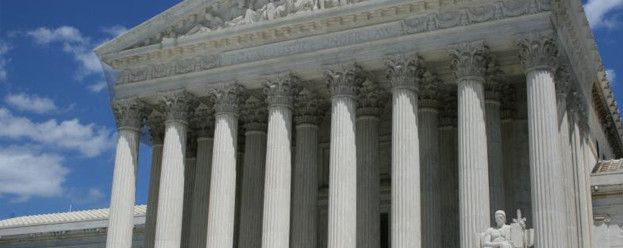PRE-JUDGMENT ENFORCEMENT OF UNSECURED COMMERCIAL CREDITOR CLAIMS THROUGH CALIFORNIA’S WRIT OF ATTACHMENT PROCEDURES
By : Curtis D. Colaw | Category : News | No Comments
12th Jul 2012

In the State of California a valuable tool for enforcement of unsecured commercial creditor/collection claims is the pre-judgment writ of attachment. This allows a creditor to obtain collection remedies (with limitations) before a Judgment is entered and may legally force a debtor to quickly resolve the claim. This is an important legal tool to get the attention of the debtor immediately especially where a debtor may have filed a frivolous or questionable answer/response to the creditor’s Complaint or the debtor’s business is closing and assets are rapidly disappearing.
This legal procedure is a creature of California statute and it is important that the creditor’s claim is for a specific or readily ascertainable, that it arises out of a commercial transaction and that it is unsecured (or sometimes partially unsecured). (See Arcata
Publications Group v. Beverly hill Publishing Co. (1984) 154 Cal.App.3d 276, 279.)
Except as otherwise provided by statute, an attachment may be issued only in an action on a claim or claims for money, of which is based upon a contract, express or implied, where the total amount of the claim or claims is as fixed or readily ascertainable amount not less than $500.00 exclusive of costs, interest and attorney’s fees. (Code of Civil Procedure section 483.010(a).)
The claim must not be secured by real property. (Code of Civil Procedure section 483.010(b).)
A plaintiff meets the burden of showing the probable validity of its claim for attachment purposes when it is more likely than not that the plaintiff will obtain a judgment against defendant on the claim. (See Code of Civil Procedure section 481.190; Howard S. Wright Constr. Co. v. Superior Court (2003) 106 Cal.App.4th 314, 319; Loeb & Loeb v. Beverly Glen Music Co. (1985) 166 Cal.App.3d 1110, 1118.)
Plaintiff’s claims cannot be reduced by the filing of a cross-complaint or answer by the defendant unless defendant’s claim is one upon which an attachment could be issued. (See Code of Civil Procedure section 483.015(b)(2)(3).)
The claimed uncertainty by a defendant as to the specific amount of ultimate damages is not a basis to deny attachment. As long as there is a clear and definite formula for the computation of damages, an order for writ of attachment is proper. (CIT Group/Equip. Find., Inc. v. Super DVD, Inc. (2004) 115 Cal.App.4th 537, 540, involving a Writ of Attachment Order related to an equipment lease.)
Plaintiff may request the court to issue an attachment on any property which is not exempt, by giving a general description of the property sought to be attached which is reasonably adequate to permit defendant to identify such property. (See Code of Civil Procedure section 484.020(e); Bank of America v. Salinas Nissan, Inc. (1989) 207 Cal.App.3d 260, 267.)
A bond must be posted with the Court; usually in the statutory amount of $10,000 before the writ will be issued. (Code of Civil Procedure section 489.220(a))
A creditor’s application for writ of attachment is normally done by normal motion procedure; but this may take several months for a hearing date. However, where a creditor is concerned that the debtor is insolvent or simply in the process of selling off or otherwise hiding assets, then the creditor should file an Ex Parte Writ of Attachment. For an Ex Parte Application to be granted, very specific legal requirements must be met pursuant to Code of Civil Procedure Section 485.010(b)(2):
(a) Except as otherwise provided by statute, no right to attach order or writ of attachment may be issued pursuant to this chapter unless it appears from facts shown by affidavit that great or irreparable injury would result to the plaintiff if issuance of the order were delayed until the matter could be heard on notice….
(b) The requirement of subdivision (a) is satisfied if any of the following are shown: …
(2) Under the circumstances of the case, it may be inferred that the defendant has failed to pay the debt underlying the requested attachment and the defendant is insolvent in the sense that the defendant is generally not paying his or her debts as those debts become due, unless the debts are subject to a bona fide dispute. Plaintiff’s affidavit filed in support of the ex parte attachment shall state, in addition to the requirements of Section 485.530, the known undisputed debts of the defendant, that the debts are not subject to bona fide dispute, and the basis for plaintiff’s determination that the defendant’s debts are undisputed…
(c) Upon a writ being issued solely on a showing under paragraph (2) of subdivision (b), if the defendant requests the court to review the issuance of the writ, the court shall conduct a hearing within five court days after the plaintiff is served with notice of the defendant’s request.
Because of the cost of filing and bond requirements, many creditors choose to seek writs of attachment only in larger collection cases of $100,000 or more. That can be a substantial mistake where other competing creditors are trying to put themselves into a priority position or assets are rapidly disappearing. Another concern is the legal effect of a pre-existing security interest in the debtor’s assets. These claims may take precedent over a Writ of Attachment claim. Thus, unsecured creditors should review and properly investigate any UCC type filings before seeking a writ of attachment. Unsecured creditors should also look to see if certain personal property does not fall under a priority lien creditor and possibly focus in on collecting that personal property.






Leave a Reply